Darwin College |
|
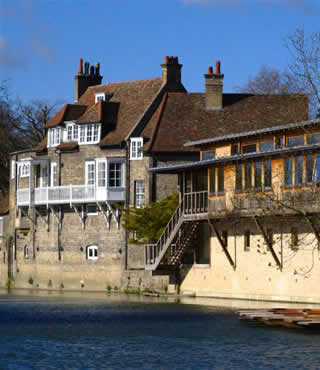 |
|||
Named after Charles Darwin and only admits graduate students |
||||||
Listen to this article |
||||||
|
||||||
Charles Darwin is one of the most prominent names associated with Cambridge. Famous for his theories of evolution and natural selection; his work on the processes of species development have become foundational to modern biology. |
||||||
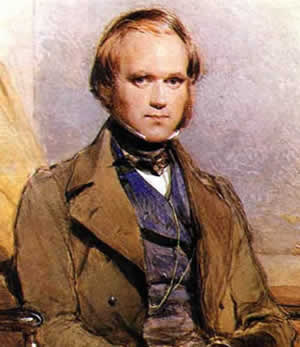 Charles Darwin Source WikiMedia (PD) |
||||||
He was born in February 1809, in Shropshire in England, the fifth of six children into a wealthy family. His father was a doctor, and when Charles was 16 years old he spent the summer of 1825 as an apprentice doctor, helping his father treat the poor of Shropshire. His career in that profession then continued when he went to Edinburgh University to study medicine. It was here that Darwin met and assisted Dr Robert Grant, who discovered evidence supporting the theory that all species had similar origins, scientifically called homology. It was a radical theory at the time that interested Darwin greatly, a sign of things to come. |
||||||
However, Charles lost interest in his medical studies, became appalled at the brutality of surgery, and so his father enrolled him at Cambridge University. His course was to be at Christ’s College, studying to be a clergyman, which Darwin’s father thought would at least secure him a steady income when he graduated. Yet it was here that he became a close follower of Professor John Henslow, who researched botany. In the summer of January 1928, it was Henslow who wrote a letter to Robert Fitzroy, captain if the HMS Beagle, suggesting Darwin as an unpaid assistant. The Beagle was set to chart the coastline of South America on a two year voyage. Not surprisingly Darwin’s father disapproved, but in the end Darwin got his wish and joined the expedition that was to become the making of his name in science. |
||||||
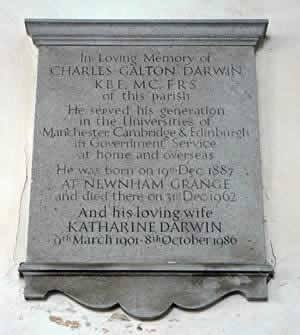 Memorial to Charles Darwin inside St Botolph's Church |
||||||
Ironically, it was through studying works at Cambridge that asserted the natural design of the world’s to be God’s, that Darwin began his desire to contribute to the theories of the natural world. The voyage of the Beagle ended up lasting five years, and on it Darwin studied land geology and the natural history of the places they went to. He made many important finds of extinct animal fossils, seashells in the mountains that explained how land shifted during earthquakes, and most importantly, through the species he studied and the people he saw he began to conceive his theory of evolution. It was on this voyage, in seeing native peoples of places that were considered culturally behind where Darwin had come from, that he began to think there was no definitive separation between humans and animals in terms of the their origins and development as species. |
||||||
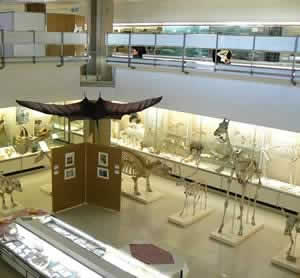 The Zoology museum showcases many of Charles Darwin’s finds from his voyage on the Beagle, and from his time at the University of Cambridge |
||||||
After much study, it was in 1838 that he officially conceived his theory of natural selection, but the pressure of the work that came with explaining, defending and detailing such a theory over ran him. He was by then a largely famous scientist and the demands for talks, books and more research left him so overworked that his health suffered greatly, even for the rest of his life. He went on to marry his cousin, Emma Wedgwood in 1839, and continued to engross himself in much study of his theory. Others at the time were voicing similar thoughts about evolution, yet mostly they did not have the evidence to back it up. It did force Darwin to publish his theories however, which he finally did in 1859, after the tragic death of two of his children in the 1850s. It was these incidents, particularly the death of his daughter Annie in 1851, that finally eradicated any faith Charles Darwin had in God. |
||||||
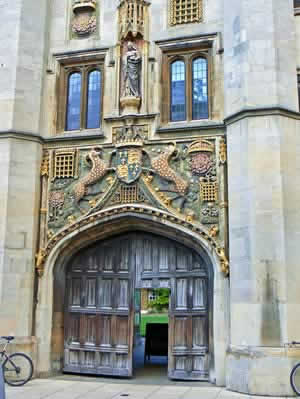 The gate of Christ's College, where Darwin studied in 1828 |
||||||
His book, On the Origins of the Species by Means of Natural Selection became very popular. He made an enduring name for himself then, even though he did not mention human evolution in this work; that was to come later. His theories were then attacked and accepted in the years following. Some accepted them, some debated evolution was the work of God, and some were against him outright. As he continued to publish more books, including The Descent of Man and Selection in Relation to Sex, where he detailed his human evolutionary theory, debate continued, as it still does today, but generally Darwinism was widely accepted. Charles Darwin finally came to rest after years of illness in 1882, was honoured with a state funeral and buried in Westminster Abbey. |
||||||
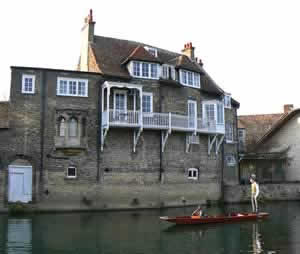 Punting past Darwin College |
||||||
Charles Darwin’s Family previously owned some of the land that Darwin College now occupies and their portraits can be found inside some of the College’s larger rooms. As well as being one of the larger colleges, admitting only graduate students, Darwin College also hosts the annual Darwin lectures. These prestigious lectures look at a certain theme every year from different schools of thought, for example, ‘love’ examined by scientists, artists and psychologists. Those who speak are experts in their field, and most of the lecture series have been published. |
||||||
|
||||||
Darwin College is open to visitors daily, 9am to 5pm. Entrance is FREE. Tel: 01223 335 660 |
||||||
|
Pocket Britain is optimised for use on a smartphone or tablet with internet access. All content is subject to copyright. All reasonable methods have been used to ensure information supplied is accurate at the time of publication. However, it is advisable to check information before relying on it. Privacy Policy |